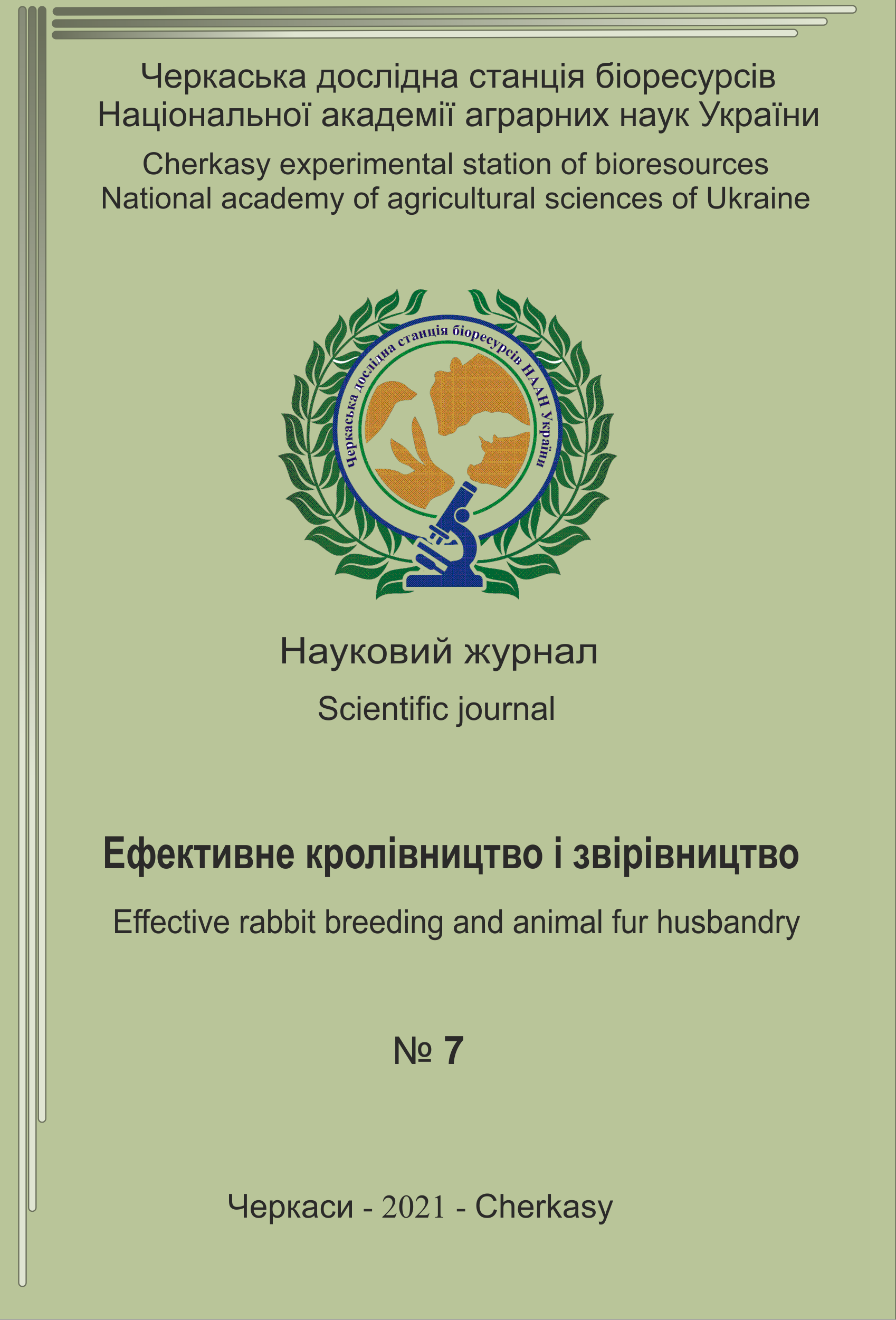COMPARATIVE ASSESSMENT OF SANITARY AND HYGIENIC STANDARDS OF RABBIT KEEPING UNDER DIFFERENT PARATYPICAL FACTORS
DOI:
https://doi.org/10.37617/2708-0617.2021.7.71-80Keywords:
rabbits, assessment of microclimate parameters, electronic air environment analyzer, sanitary and hygienic standards, paratypic factors, force of influenceAbstract
The relevance of the work is due to the need to determine the influence of paratypical factors on the variability of indicators of indoor air pollutants in rooms for keeping rabbits. In particular, this concerns the volume concentration of СО2, NH3, СH4 and the mass concentration of fine dust of PM1-10 fractions. The
work on the implementation of the method of multi-parametric assessment of the microclimate of rabbit premises by the method of continuous automatic registration is being carried out in Ukraine for the first time. The purpose of the research was to conduct a comparative assessment of the contamination of the
rabbit hutch with carbon dioxide, ammonia, methane and fine dust by the method of continuous automatic registration for periods of the year and for one and two removals of manure during the day. Analytical, zootechnical, physical and biometric research methods are applied. A comparative assessment of the sanitary
and hygienic standards for keeping rabbits of the Poltava silver breed was carried out. The animals were kept in a brick room equipped with a supply-exhaust ventilation system with a mechanical drive in one- and two-tier galvanized cage batteries. The type of floor is solid concrete with one or two removals of manure
per day. The density of planting rabbits was 12.5-13.0 heads per 1 square meter. It was established that the parameters of the microclimate for the periods of the year were close to the normative values, which indicates, in general, that the well-being of rabbits is ensured. The exception was the indoor air temperature in the summer period, which was higher than the standard value by 0.5-0.9 0C and the average daily relative air humidity in the winter and transitional periods. It exceeded the normative value by 1.4-14.1%. For keeping rabbits in a capital room, in cage batteries on a solid concrete floor, a low (ηx2=0.003-0.120), however, probable influence of the frequency of manure removal on the variability of temperature and
relative air humidity indicators and volume concentration of carbon dioxide, ammonia and mass concentration of fine dust. Also, a medium and high (ηx2=0.28-0.96) influence of the period of the year on the variability of the above-mentioned microclimate indicators was established.


